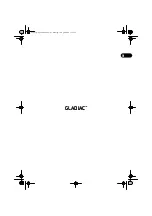
i-6
N
negative threshold trigger
A-10
number of
differential channels
A-10
DMA channels
A-9
extra clocks
A-11
extra triggers
A-10
filters
A-10
gains
A-10
I/O channels
A-10
resolutions
A-10
scans per trigger
A-9
single-ended channels
A-10
voltage ranges
A-10
Nyquist Theorem
2-7
O
offset
analog-to-digital converter offset
zeroing
5-3
digital-to-analog converter offset
zeroing
5-3
one-shot mode
2-32, A-11
online help
for DriverLINX
1-3
Operating system (OS), required
1-4
operation modes
continuously-paced scan mode
2-8
event counting
2-26
externally-retriggered scan mode
2-9
frequency measurement
2-28
internally-retriggered scan mode
2-8
one-shot pulse output
2-32
rate generation
2-30
repetitive one-shot pulse output
2-34
single value analog input
2-7
single value analog output
2-19
waveform generation
2-20
oscilloscope
in DriverLINX Analog I/O Panel
4-2
output clock sources
external D/A output clock
2-17
internal D/A output clock
2-17
Output FIFO
2-19, 2-20
Output FIFO Counter
2-19
Output FIFO Underflow error
2-20
output filters
2-17
output pulse
high-to-low
A-11
low-to-high
A-11
output ranges
2-17
outputs, analog
calibration
5-3
outputting pulses
continuously
2-30
one-shot
2-32
repetitive one-shot
2-34
P
physical specifications
A-8
pin assignments
KPCI-3110 Series J1 connector
B-2
KPCI-3110 Series J2 connector
B-3
STP-3110 screw terminal panel J1 connector
B-4
STP-3110 screw terminal panel J2 connector
B-5
ports
2-21
positive threshold trigger
A-10
post-trigger acquisition mode
2-11, A-9
Power
requirements for computer
1-4
power specifications
A-8
precautions
installation
DriverLINX before board
3-2
pre-trigger acquisition mode
A-9
problem isolation
6-2
program, application
LabVIEW
3-4
TestPoint
3-3
programmable gain
A-10
programmable resolution
A-10
programming languages
DriverLINX driver for, compatibility
3-3
pseudo-differential inputs
3-13
pulse output
duty cycle
2-25
one-shot
2-32
rate generation
2-30
repetitive one-shot
2-34
types
2-25
pulse train output
2-30
pulse width
2-26
R
random channel-gain list
A-10
ranges
analog input
2-5
analog output
2-17
number of
A-10
rate generation mode
A-11
repetitive one-shot mode
2-34, A-11
resistors
R1 to R16
3-10
R17 to R32
3-10
Summary of Contents for KPCI-3110
Page 3: ......
Page 4: ......
Page 7: ......
Page 8: ......
Page 16: ...Preface...
Page 20: ...1 Overview...
Page 25: ...2 Functional Description...
Page 54: ......
Page 55: ......
Page 57: ......
Page 58: ......
Page 59: ......
Page 61: ...3 Installation and Configuration...
Page 66: ......
Page 68: ......
Page 80: ......
Page 81: ......
Page 82: ......
Page 83: ......
Page 84: ......
Page 85: ......
Page 86: ...4 Testing the Board...
Page 89: ...5 Calibration...
Page 92: ...6 Troubleshooting...
Page 99: ...A Specifications...
Page 111: ...B Connector Pin Assignments...
Page 116: ...C Systematic Problem Isolation...
Page 143: ...D Using Your Own Screw Terminal Panel...
Page 156: ......







































